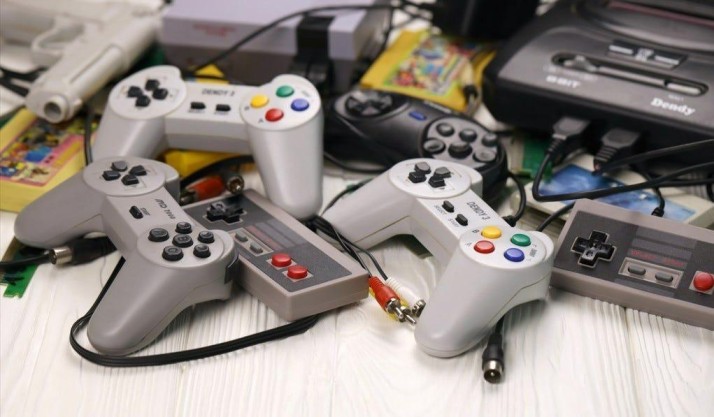Introduction
Gaming consoles have revolutionized the entertainment industry, providing millions of players with immersive gaming experiences. From the early days of Pong to modern-day powerhouse machines like the PlayStation 5 and Xbox Series X, consoles have evolved significantly in terms of technology, graphics, and gameplay. This comprehensive guide will take you through the history, current landscape, and future of gaming consoles, helping you make an informed decision about which console suits your gaming needs best.
The History of Gaming Consoles
1st Generation (1970s): The Birth of Home Gaming
The first-generation gaming consoles marked the beginning of home entertainment gaming. These early consoles used simple circuitry and lacked microprocessors, making them extremely basic compared to today’s systems.
- Magnavox Odyssey (1972) – The first-ever home gaming console.
- Pong Consoles (1975-1977) – Pong, developed by Atari, became a household name.
- Coleco Telstar (1976) – One of the first systems to offer multiple game variations.
2nd Generation (1976-1984): The Rise of Cartridges
This era saw significant improvements in gaming technology, as consoles transitioned from built-in games to cartridge-based systems.
- Atari 2600 (1977) – Popularized the use of interchangeable game cartridges.
- Intellivision (1980) – Introduced better graphics and a more complex controller.
- ColecoVision (1982) – Brought arcade-quality games to home consoles.
3rd Generation (1983-1990): The 8-bit Era
With the video game crash of 1983, the industry needed a revival, and Nintendo delivered.
- Nintendo Entertainment System (NES) (1985) – Rejuvenated the gaming industry with classics like Super Mario Bros. and The Legend of Zelda.
- Sega Master System (1986) – Competed with the NES but struggled to gain market dominance.
4th Generation (1987-1996): The 16-bit Era
The 16-bit era introduced better graphics, sound, and gameplay mechanics.
- Super Nintendo Entertainment System (SNES) (1991) – Home to iconic franchises such as Super Mario, Zelda, and Donkey Kong.
- Sega Genesis (1989) – Gained popularity with Sonic the Hedgehog.
5th Generation (1993-2002): The Transition to 3D
The transition from 2D to 3D gaming changed the industry forever.
- Sony PlayStation (1994) – Revolutionized gaming with 3D graphics and CD-based games.
- Nintendo 64 (1996) – Introduced legendary games like Super Mario 64 and The Legend of Zelda: Ocarina of Time.
- Sega Saturn (1994) – Struggled in sales but had some cult classics.
6th Generation (1998-2006): The Rise of Online Gaming
- PlayStation 2 (2000) – The best-selling console of all time.
- Microsoft Xbox (2001) – Marked Microsoft’s entry into gaming, bringing Halo and online gaming via Xbox Live.
- Nintendo GameCube (2001) – Offered great exclusives but lagged behind competitors in sales.
7th Generation (2005-2013): HD Graphics and Motion Control
- Xbox 360 (2005) – Popularized online multiplayer gaming.
- PlayStation 3 (2006) – Introduced Blu-ray technology and powerful hardware.
- Nintendo Wii (2006) – Revolutionized gaming with motion controls and family-friendly games.
8th Generation (2012-2020): 4K Gaming and VR
- PlayStation 4 (2013) – Dominated with exclusives like God of War and The Last of Us Part II.
- Xbox One (2013) – Improved online services and introduced Game Pass.
- Nintendo Switch (2017) – Innovated with hybrid handheld-console gaming.
9th Generation (2020-Present): The Future is Here
- PlayStation 5 (2020) – Features ultra-fast SSDs, ray tracing, and 4K gaming.
- Xbox Series X|S (2020) – Offers backward compatibility, Game Pass, and powerful performance.
- Steam Deck (2022) – A handheld PC gaming console by Valve.
Comparing the Top Gaming Consoles in 2025
PlayStation 5 vs. Xbox Series X vs. Nintendo Switch OLED
| Feature | PlayStation 5 | Xbox Series X | Nintendo Switch OLED |
|---|---|---|---|
| Resolution | 4K/8K | 4K/8K | 1080p (handheld), 4K (docked) |
| Performance | 10.28 TFLOPS | 12 TFLOPS | Custom NVIDIA Tegra |
| Exclusive Games | God of War, Spider-Man, Final Fantasy | Halo, Forza, Gears of War | Zelda, Mario, Pokémon |
| Online Service | PlayStation Plus | Xbox Game Pass | Nintendo Switch Online |
| Price | $499 | $499 | $349 |
The Future of Gaming Consoles
Cloud Gaming
With services like Xbox Cloud Gaming and PlayStation Now, players can stream games without needing powerful hardware.
Virtual Reality (VR) and Augmented Reality (AR)
Devices like PlayStation VR2 and Meta Quest are pushing the boundaries of immersive gaming.
AI and Machine Learning in Gaming
Future consoles will likely integrate AI-driven gaming experiences, adaptive difficulty, and procedural content generation.
Sustainable Gaming
Companies are focusing on eco-friendly console production with energy-efficient components and recyclable materials.
How to Choose the Best Gaming Console for You
- Consider Your Gaming Preferences – Do you prefer exclusive titles, online gaming, or portability?
- Budget – Consoles range from $300 (Switch) to $500 (PS5/Xbox Series X).
- Performance Needs – Higher resolutions and frame rates demand more powerful consoles.
- Online Services – PlayStation Plus, Xbox Game Pass, and Nintendo Online offer different benefits.
- Game Library – Choose based on the games you want to play.
Conclusion
Gaming consoles have come a long way from their humble beginnings, evolving into sophisticated entertainment machines. Whether you’re looking for powerful performance, exclusive titles, or a family-friendly gaming experience, there’s a console for you. As technology advances, gaming will continue to push the limits, making it an exciting time to be a gamer!



